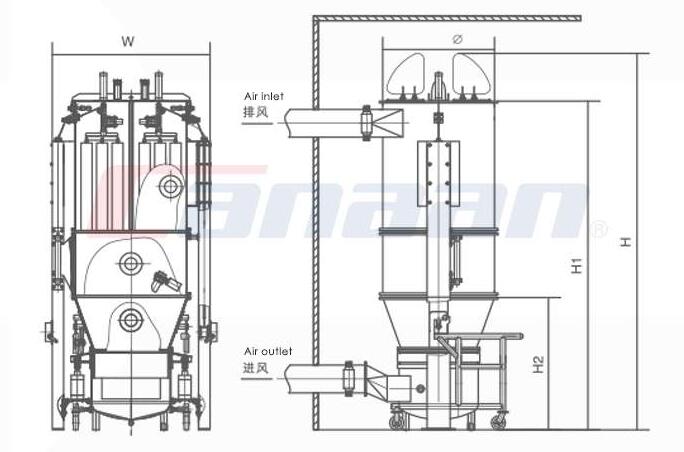Fluid bed technology is used for cooling, heating and drying of bulk solid materials. Fluid bed heat exchange is performed by passing a gas through a porous distribution plate and then flowing through a solid layer (bed). The air has two functions. First, the air flows through the solid bed at a rate sufficient to support the weight of the particles, thus creating a fluid state in which the particles can flow. Second, the air in the fluid bed acts to cool, heat, or dry the particles as they come into direct contact with the solid material within the fluid bed chamber.
Energy Requirements for Fluid Bed Cooling
Inherent in the use of air for direct cooling of bulk solids is the large volume of air required by the fluid bed cooler and the cost of cooling, treating and cleaning the air.
Fluid Beds and Emissions
Fluid bed cooling of bulk solids results in high emissions. Using air to cool bulk solids is a "disposable" solution. Air is drawn in, cooled, passed through the product, and then must be disposed of through a stack. The large volume of air required for direct cooling results in large amounts of dust and emissions. Obtaining stack permits is becoming increasingly difficult, and as pollution controls become more stringent, emissions must be cleaned and scrubbed before being released into the atmosphere.
Fluid bed heat exchangers depend on the use of large amounts of air
Fluid bed technology for cooling and heating is predicated on the use of large amounts of air to fluidize the material (needed to make the product flow) and to act as a heat exchange medium (to add or remove heat from the process).
For fluid bed coolers, ambient air is drawn in using a large fan, and in most climates the air must be cooled (or treated) before it can be blown through the product using a high horsepower fan. The air leaving the fluid bed cooler is then discharged through an exhaust stack. Both the cooling process and the circulating fans have high energy requirements.
Fluid Beds, Product Quality and Energy
Since ambient air comes into direct contact with the product as a cooling medium, both the temperature and saturation point of the air must be considered to avoid process problems. In many climates, the temperature of the ambient air is higher than the temperature required to achieve cooling, which means that the air must be cooled before it can be used. Another issue is the saturation point of the cooling air. If this is not addressed, moisture can migrate from the air into the product, leading to caking and subsequent spoilage.
To ensure that saturated air does not come into contact with the product, the air must be cooled below the desired temperature to allow moisture to condense out and then reheated to the optimum cooling temperature. Cooling and reheating ambient air consumes a lot of energy.

评论
发表评论